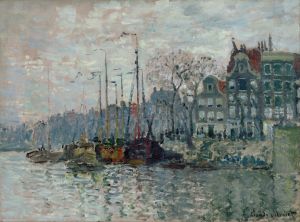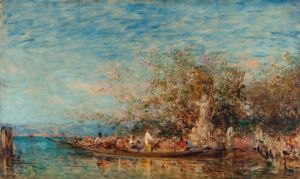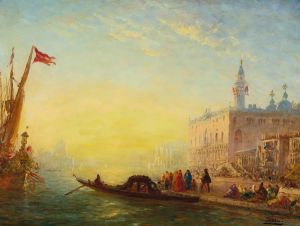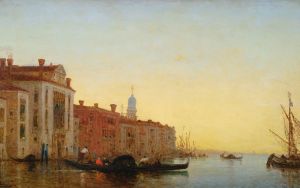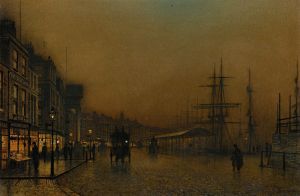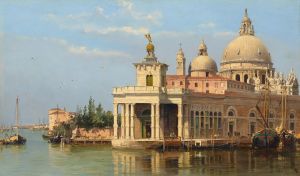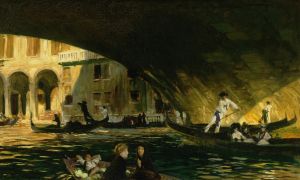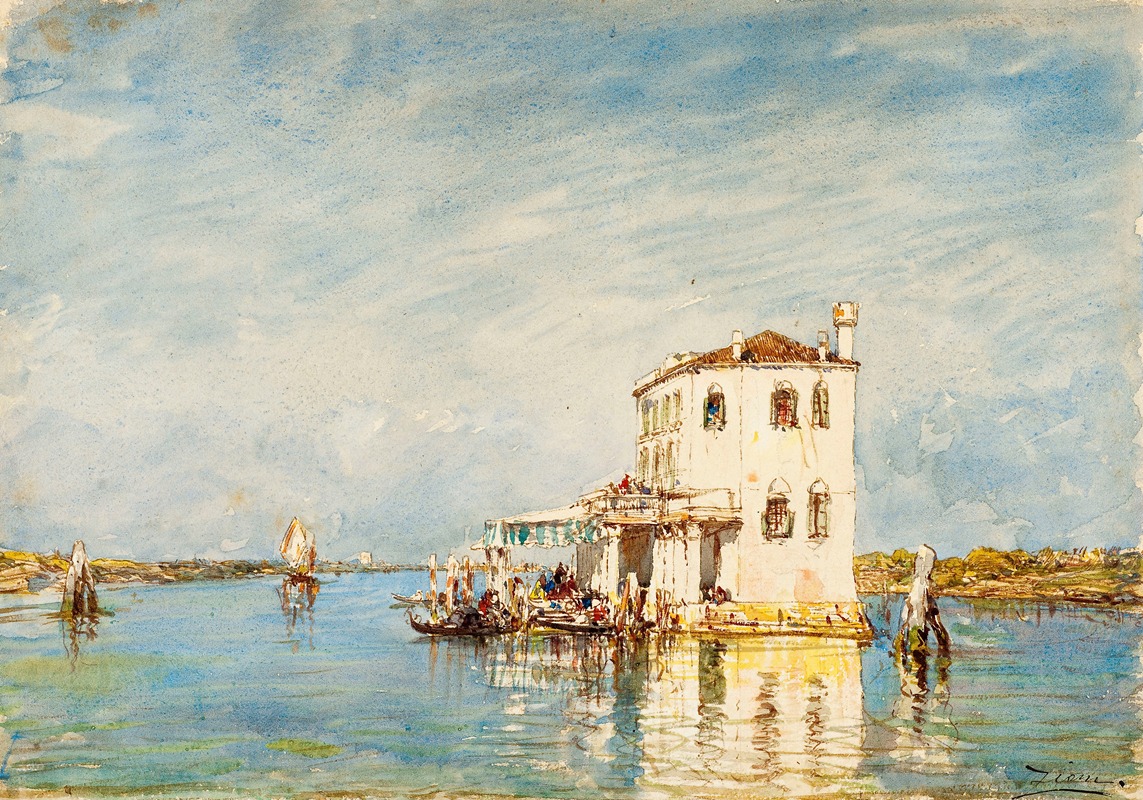
La Douane À Venise
A hand-painted replica of Félix Ziem’s masterpiece La Douane À Venise, meticulously crafted by professional artists to capture the true essence of the original. Each piece is created with museum-quality canvas and rare mineral pigments, carefully painted by experienced artists with delicate brushstrokes and rich, layered colors to perfectly recreate the texture of the original artwork. Unlike machine-printed reproductions, this hand-painted version brings the painting to life, infused with the artist’s emotions and skill in every stroke. Whether for personal collection or home decoration, it instantly elevates the artistic atmosphere of any space.
Félix Ziem's painting La Douane À Venise (Customs House in Venice) is a notable work by the French artist, who is renowned for his vibrant depictions of Venice and other picturesque landscapes. Ziem, born in 1821 in Beaune, France, was a prominent figure in the 19th-century art world and is often associated with the Barbizon School, although his style also reflects influences from Romanticism and early Impressionism.
The painting captures the iconic customs house, or "La Dogana," in Venice, a structure located at the tip of the Punta della Dogana, where the Grand Canal meets the Giudecca Canal. This location is one of the most celebrated views in Venice, offering a striking perspective of the city's architectural beauty and its relationship with the surrounding water. Ziem's work often focused on the interplay of light and water, and La Douane À Venise exemplifies his ability to render the shimmering reflections and atmospheric effects that define Venice's unique charm.
Ziem traveled extensively throughout his life, and his visits to Venice left a profound impact on his artistic output. He first visited the city in the 1840s, and it became a recurring subject in his paintings. His depictions of Venice, including La Douane À Venise, are characterized by their luminous color palette, dynamic compositions, and a sense of romantic idealization. These qualities made his Venetian scenes highly sought after by collectors during his lifetime.
The exact date of creation for La Douane À Venise is not definitively documented, but it is consistent with Ziem's mature period, during which he produced many works inspired by his travels. The painting showcases his skill in capturing the bustling activity of Venice's waterways, with gondolas and boats often featured as central elements in his compositions. The customs house itself, with its distinctive architecture and prominent location, serves as a focal point, anchoring the scene within the city's recognizable landmarks.
Félix Ziem's contributions to art were widely recognized during his career. In 1857, he became the first artist to be awarded a studio at the prestigious French Academy in Rome without having competed for the Prix de Rome. Later, in 1864, he was made a Chevalier of the Legion of Honor, a testament to his influence and success as an artist.
Today, Ziem's works, including La Douane À Venise, are held in various public and private collections around the world. His paintings continue to be celebrated for their vibrant energy and their ability to transport viewers to the enchanting locales he so vividly portrayed.





